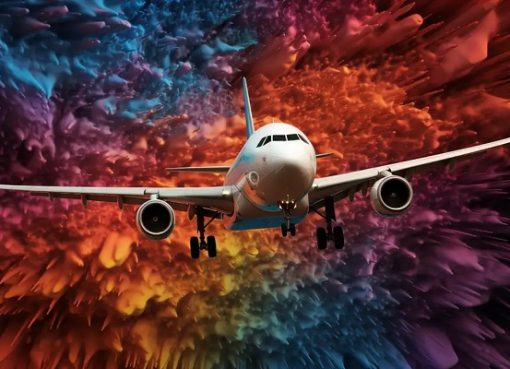The Managing Director, Nigerian Airspace Management Agency, Capt. Fola Akinkuotu,speaks on how the ongoing upgrade of the Instrument Landing Systems at the Abuja and Lagos airports will enhance the capacity of pilots to land airplanes in low visibility
How ready is NAMA in terms of extending navigational services to the new terminal at the Nnamdi Azikiwe International Airport, Abuja?
The point is that we have always been ready. When you have increased traffic; that means more airplanes will come in and so we have to provide more manpower which we are doing in terms of air traffic controllers.
We are close to achieving a higher level of landing navigational aid in Abuja. Except for some bureaucratic bottlenecks, we should have had a CAT-3 (Category Three) landing system here which will improve our capability to land airplanes in very poor visibility.
I mean visibility that is poorer than what we have right now. So to a good extent, I think we had foreseen the possibilities that we are seeing today and we will be able to match whatever the demands are.
One of the things that delayed the completion of this new Abuja terminal was the siting of the facility as it partly blocks the overall view of the runway from the control tower. What are you doing about this?
I don’t know if I quite agree with the way you worded the question but I get the point you are trying to make. In conceptualisation and design, there were, shall I say, flaws that were observed.
The terminal, as it was designed, made it difficult for those in the control tower to see in totality or to have a complete aerial view of the two ends of the runway. However, this will be fixed in the long or in the medium term because the adjustment in the master plan will achieve that.
Since it is a necessity for the air traffic controller to be able to have visible access to both ends of the runway, we have provided a mobile tower, which is there. So there’s a mobile tower and it takes care of that and you need not to worry because aside from the mobile tower, as I said earlier, the adjustment in the master plan will take care of this concern in the medium term.
The CAT-3 status that you earlier talked about is specifically for which of the facilities at the airport?
It is not a category for the runway but a category for the landing navigational aid. As it is right now, we have the Instrument Landing System Category Two, which allows us to fly at some reduced visibility and to be able to fly lower than a Category One Instrument Landing System.
pproval has been given; contracts have been awarded; construction has started for the installation of the Category Three Instrument Landing System. We had anticipated having it, but except for some bureaucratic bottlenecks, it should have been completed by now. However, I believe that before the end of January 2019, it should be ready and I’ll let you know.
How many airports are you planning to have the landing system installed in?
We were planning for two, Lagos and Abuja, and the next one, of course, will be Kano. So for now, we are looking at Lagos and Abuja airports. This, however, will be followed very closely by the Kano airport.
Are you saying that with CAT-3, when there is near-zero visibility a pilot can land an aircraft?
Well, you have answered your question in a way. However, there are different categories of CAT-3. There is CAT-3 A, B and C. And you have said that next to zero visibility, and I will say in very, very poor visibility the pilot of an aircraft will be able to land his airplane.
This depends on the Category because it is A, B and C, especially when you start asking about the meter range in terms of visibility. But the truth is that you will be able to land in very, very marginal weather.
And if you have a certain category, you could actually land in zero-zero visibility. But it is not only us (NAMA) that will have to prepare. However, I guess other people cannot commence preparation because installing a Category Three ILS system will require that all of us improve on our own individual and collective capabilities.
We have to have uninterrupted power supply. The airplanes will have to be properly equipped. The pilots will have to be trained for low visibility approaches and our approach lights will have to meet the required Category Three standard.
But the starting point is to ensure that we have it and everybody has been sensitised about what is coming and I’m sure everybody will rise up to it for us to take full advantage of this move. This is because Category Three has such a great advantage in terms of visibility when landing, especially during the harmattan season like what we are experiencing now.
From your view as the agency spearheading this move, would you say other players in the sector are coming up to speed as regards this initiative?
First, let us look at the pilots and their training for low visibility approaches. It is not just one training that you will conduct for them. It is a training that you have to do all the time, usually every six months.
There is no point in starting to learn how to do low visibility approaches when the equipment is not there. And don’t forget that uninterruptible power supply is vital. Yes, there is a plan actually for an independent power system for these major airports and FAAN (Federal Airports Authority of Nigeria) provides the lights as they’ve been told. So by and large, once the system comes in, everybody will move up to speed.
Are there other plans you have for next year that you may want to comment on?
Aviation is a very dynamic sector. My hope is that we will continue to improve on the services that we provide and as I said earlier, in January 2019, we hope to bring in the CAT-3 ILS system.
We hope to also improve on our radar systems. And one of the major things that we are looking at is the completion of the aeronautical information management system. So, those are things that we are looking up to next year.
Source: Punch











